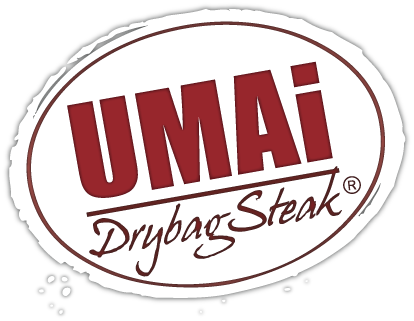Methods for Sealing UMAi Dry
There are three ways to seal UMAi Dry® and create a bond necessary for aging successfully. All of them are safe and effective; the decision comes down to preference and what tools you have available.
Method #1: Vacuum Sealing UMAi Dry
When it comes to sealing UMAi Dry with a Vacuum Sealer, you have options. Below are solutions for both home and commercial sealing applications.
Channel-type Vacuum Sealer with VacMouse® Vacuum Aide
The Channel-type sealers are designed to draw the air out of the bag while it is being held closed by the sealing jaws. Upon air evacuation they trigger the sealing function with the bag remaining closed by the sealing jaws the entire cycle time.
FoodSaver brand and other Channel-type sealers are quite convenient, widely available and commonly owned household appliances. FoodSaver brand or other vacuum sealers that use embossed Channel-type bags are now compatible with UMAi Dry® with the use of UMAi VacMouse® vacuum aid strips.
How the VacMouse® works:
Specially-designed channel bags allow air to be drawn out while the bag is closed due to the embossed channels built into the design of the bag. UMAi Dry® does not have this channel design and will not allow air to be drawn out while the bag is closed. UMAi VacMouse® vacuum aid strip is designed to allow air to be drawn out of the UMAi Dry® bag while the opening held closed by the sealing jaws, much like the specially-designed embossed bags.
The UMAi VacMouse® is then sealed into the bag by the heat sealing strip. UMAi VacMouse® has been tested on the FoodSaver model 2000-series sealers that are offered on our website. Other types of similar horizontal channel sealers may work; however, are not guaranteed to work with the UMAi VacMouse® since there are multiple features on different brands of machines. It will be helpful to watch the following video to understand how VacMouse® enables you to apply UMAi Dry® with FoodSaver series 3000 vertical machines that rely on the bag triggering the automated sealing function: Sealing UMAi Dry® with Foodsaver 3800 series
Chamber Type Commercial Vacuum Sealer
Chamber type vacuum sealers are primarily employed in processing facilities as their cost is quite high. Chamber type sealers are so called internal type, where the bag and its contents are placed in a chamber which is then pressurized to push the air out of the bag and seal it. These sealers are perhaps the best for sealing UMAi Dry® however their biggest limiting factor may be the actual size of the chamber (one typically needs to accommodate large subprimal cuts).
Method #2: Sealing UMAi Dry using the Immersion Method
This low-tech “no gadget” method uses water’s natural pressure against the submerged bag to push out most air.
- After clean transfer to UMAi Dry, slide meat into a bottom corner of bag.
- Fill bucket with cold water. You may also use your sink.
- Loosely loop a zip tie around the opening of the UMAi Dry bag, slide close to the meat. Hold up the excess UMAi Dry material with one hand while you lower the meat into the water.
- Keeping the bag opening above the water surface, massage the air toward the opening and press the UMAi Dry into good contact with the meat surface.
- Push around the zip tie to remove all the air before cinching the zip tie. Add a second tie to secure the opening. Trim off excess UMAi Dry material.
Method #3: Sealing UMAi Dry using the Netting Method
Another low-tech method requires about 2-3 feet of wide meat netting. You may able to source this from your local butcher. You also need a “chip clip” or zip tie to close the bag.
- After clean transfer to UMAiDry®, slide meat tightly into a bottom corner of bag. Press the air out to get the best possible contact to meat. Temporarily clip the bag closed. Roll any excess UMAi Dry material into a narrow band along one side of the meat.
- Stretch the meat netting over both forearms. Reach through to grab the bottom end of the UMAi Dry bag. Hold the narrow folded band of UMAi Dry on the edge in places as you ease the netting over the meat toward the opening. Try to ensure the UMAi Dry material does not fold over itself except along the edge. It is helpful to have a second pair of hands available to help with this step.
- Release any air that has gathered at the open end of the UMAi Dry bag, and re-clip securely.
